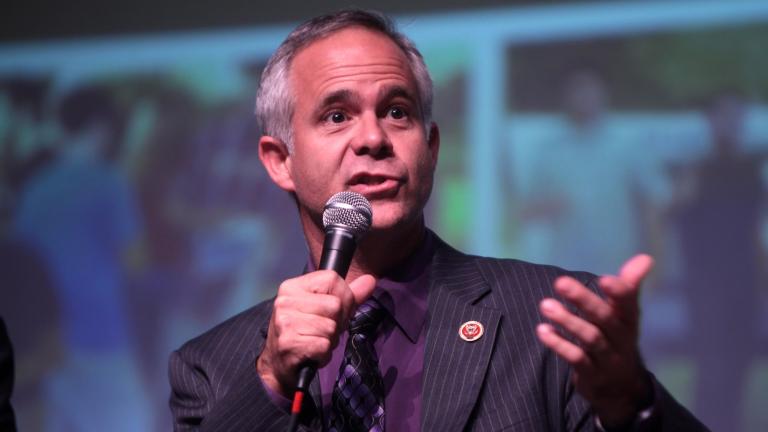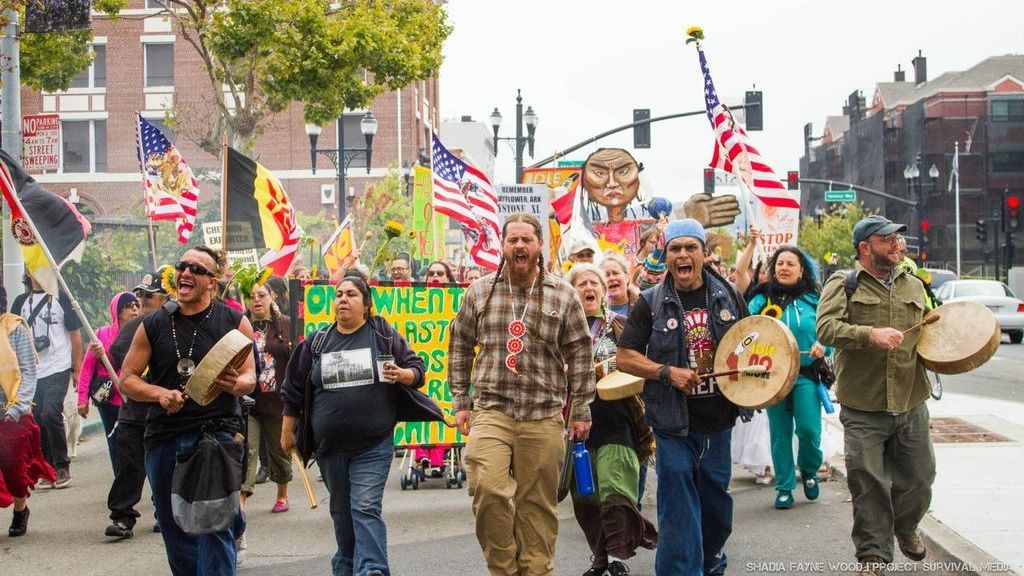Tomorrow, the Climate Justice Alliance, a conglomerate of roughly 35 grassroots organizations from around the country, will convene hundreds of activists in Richmond, Calif., for the Our Power National Convening, a precursor to the People’s Climate March in New York City in September. The mission: Show delegates heading to the Sept. 23 United Nations Climate Summit that the best sources for climate change solutions are communities where people are already coping with heat extremities and managing water crises.

Richmond is a fitting site for the march. It’s long been on the Environmental Protection Agency’s radar as an environmental justice community, meaning it’s overburdened with pollution, poverty, and health problems. It’s surrounded by hundreds of industrial facilities, including waste incinerators, oil refineries, and pesticide producers assaulting the air with an assortment of toxic pollutants.
The Aug. 6 date is also pertinent, commemorating the 15,000 residents of the surrounding Contra Costa county injured by an explosion at the Chevron oil refinery in 2012.
Despite that disaster, and another fire that occurred there just weeks ago, Chevron is planning to expand its 112-year-old refinery, which already occupies over 3,000 acres of land. These plans were just recently approved by Richmond’s city council, even though a provision for committing Chevron funds to building a hospital was dropped from the proposal.
Given that the Chevron facility is also one of the largest greenhouse gas emitters in California, and sits near the San Francisco Bay, exposing itself to rising sea levels, Richmond is an all too perfect display of how all of these dangers connect.
“We live every day on the frontlines of the climate crisis, with illnesses and the danger of explosions, and on the frontline of the economic crisis when we can’t keep money and jobs in our city,“ Mey Saechao of the Asian Pacific Environmental Network (APEN) said in a press statement. “These crises are equally dangerous and connected.”
The refinery’s expansion could make that even worse. Chevron is banking on sucking in more crude oil by rail, particularly from the Bakken region in North Dakota, a controversial transaction given the recent train explosions there and the extreme flammability of Bakken crude.
The expansion comes at a time when the Environmental Protection Agency is finally beginning to enforce its congressional and Supreme Court-mandated authority to regulate greenhouse gas emissions — but there, too, Richmond could be a loser. The EPA has approved California’s cap-and-trade system as an acceptable model for carbon emission reductions in the federal agency’s proposed Clean Power Plan. But climate justice advocates are concerned that cap-and-trade allows companies to purchase pollution “allowances” and “offsets” that ameliorate the problem elsewhere, while continuing to pollute locally.
Such schemes have also found favor among the global climate diplomats who will meet at the upcoming UN Climate Summit.
“Carbon credits and high-level summits don’t really do anything to address the root causes of this crisis,” said Michelle Mascarenhas-Swan, co-director of the Climate Justice Alliance (CJA) in a press statement. “Climate change and economic exploitation are human-made problems; the solutions will grow from the grassroots, not the stratosphere.”
In a phone interview yesterday, Mascarenhas-Swan said her statement is a reference to the growing movement around a “new center of gravity in the climate movement.”
“We are in the midst of a transition — that part is clear. But what’s not clear is whether that transition will be just or not.”
Meaning, they are seeking a transition from the expansions and explosions of a fossil-fuel-based economy to one that’s safer and more beneficial to the health of communities of modest resources. The “just transition” also focuses on building power and ownership for these communities. As an example of this, Mascarenhas-Swan points to the Oakland-based Energy Solidarity Co-op, where the financing of renewable energy is democratized, as opposed to the long-running model of being monopolized by utility companies. You can read about other examples of justice-based climate solutions from the grassroots in California here.
“We are trying to simultaneously reduce the need for fossil fuel consumption, creates jobs, create energy that costs less, and address the climate crisis as well,” Mascarenhas-Swan said.
The Richmond convening will end with a day of action on August 9 that will include a march along the Richmond Greenway, a three-mile bike and pedestrian trail bordered with local art and urban agriculture that was once a railway for transporting war materials. It will culminate with a solar-powered “unplug the empire” concert featuring demonstrations of community climate change solutions like solar panel installations and rainwater collection installation.”
Also happening this week is the Climate Justice Youth Summit, another prelude to the People’s Climate March in September. Elizabeth Yeampierre of UPROSE, one of the organizers (also a member of the Climate Justice Alliance) tells me the summit “is the largest convening of young people of color on climate change in the country,” with over 650 young people registered. Here’s one of those young ones, Rico Bautista breaking it down:



